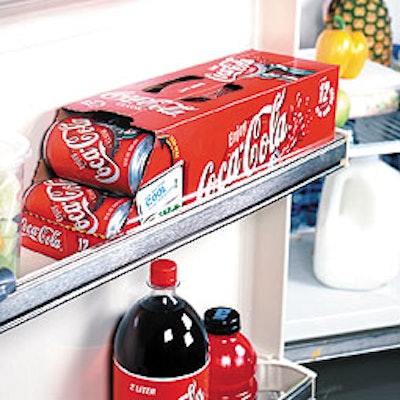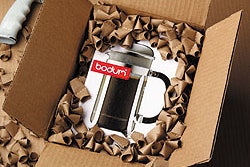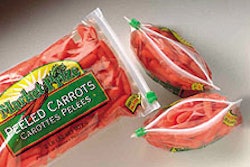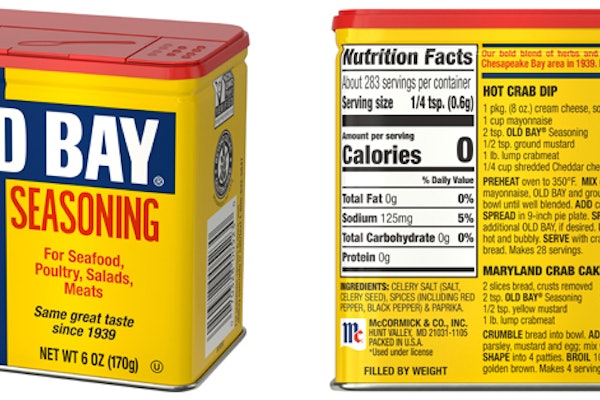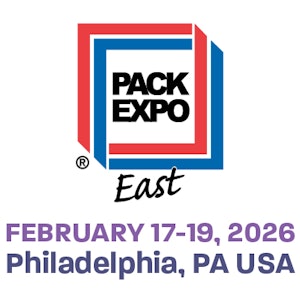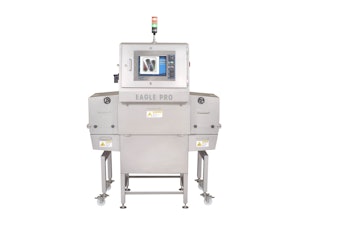Coca-Cola Bottling Co. Consolidated, Charlotte, NC, sensed a big opportunity when it learned about a new 12-pack can carrier that Coke USA had been testing. The pack, called the Fridge Vendor by Riverwood Intl. (Atlanta, GA), is a 6x2 can configuration, rather than the conventional 4x3.
This allows the entire 12-pack to be easily kept on a shelf in the consumer’s refrigerator, and a perforated corner section permits easy dispensing of the soft drink cans. Supplied by Riverwood, the multipacks are made of 18-pt Aquacoat wet-strength paperboard, printed gravure in four to seven colors, depending on the brand graphics.
The pack was designed to run on one of Riverwood’s multipackers, and most of the plants operated by Coke Consolidated had those machines in place. At Charlotte, the first plant to try the new pack, a relatively new (early 2000) Quikflex Model 600C Riverwood machine was first to be converted.
The key to the project was the extremely favorable results the new pack showed in consumer testing conducted by Coke USA. “Based on this research—and our willingness to change the way the game is played—that’s how we decided to make this a 100-percent replacement throughout our company,” says Norman George, senior vice president and chief marketing and customer officer.
Shifting to a new 12-pack, which Coke Consolidated calls Fridge Pack, is truly a big deal for the company. In the past, 12-packs had represented 45% or more of its can volume, and since the introduction of the Fridge Pack, that percentage is increasing. When pressed for specifics, George says, “I’m somewhat reluctant to talk about our experience with this pack, because I don’t want to tip off our competition.” He did say that consumer preference for this pack is “off the chart,” compared to the 4x3 configured 12-pack.
New features
“When we changed the shape of the package, we also added other features to the package to make it more of a ‘vending’ machine type of pack,” says Enrico Francis, marketing manager for Riverwood’s soft drink business unit. The new perforated opening and dispensing device on the pack is currently patent-pending, he says.
“The easy-opening device is not just a straight horizontal perforation,” says Jerry Vetter, a Coke Consolidated purchasing executive. “In the center is a raised tab that allows the user to get a couple of fingers inside to more easily release the dispensing feature.” He compares it to conventional dispensing tear-offs on 4x3 packs that often didn’t tear easily. And once removed, he says there was nothing to hold back the cans.
Graphics printed onto the former 4x3 multipacks were modified for the new configuration, Vetter adds, to incorporate new copy and illustrations that tout the convenient package opening and dispensing features. When asked about package economics, Vetter admitted his company was paying a premium at the start. “Of course, the cost is more volume-related than anything else. Once our volumes on this pack increase, the cost disparities will likely disappear.” He adds that the new pack is capable of handling inserts or even backside printing, issues that come up with many soft drink promotion programs.
Before this package was created, Riverwood looked at a lot of different handle designs, Francis says. “Ultimately we decided to stay with our existing handle configuration.”
Changeover critical
Overall, Francis says, the supplier spent about nine months in research and development to be able to change its multipackers to produce the 6x2 pack. “As radical as the package change appears to be, we didn’t want the customer to have increased downtime on changeovers,” he says. Coke Consolidated verifies this, but adds that the company had to make considerable modifications downstream to reach that goal (see related story, p. 109).
In fact, as George says, “Our production folks have a great attitude: They ask ‘How can we make it work?’ rather than explaining why it can’t work. Our engineers did a phenomenal job working through solving the problems of the new pack. They worked through some problems that I think a lot of other companies would never have tackled.”
Once the production problems were solved, the logistics of transportation, delivery, and store sets were a comparative “breeze,” George says. All of the plans for implementation of Fridge Pack were developed in-house, he says.
“We produced in-house a video that walked all our people through all the changes they’d need to make,” he adds. “It was really minimal, more of a re-education project on stacking configurations and how to handle the product through the supply chain, including the building of displays.”
The payoff, George says, has been results that “definitely exceeded” Coke’s initial projections. “The response has been very strong, especially for what we consider some of our second-tier brands like Mello Yello, Diet Sprite, and others. In North Carolina, the 12-packs represent about 48 percent of our supermarket sales, and that’s probably the lowest in any of our company’s markets. In other areas, 12-packs register as high as 75 percent of our package mix for supermarkets.”
In addition, the company performed some post-introduction research that continued to show high consumer preference for the Fridge Pack. And, says George, “We’ve had more unsolicited praise for this package than for any other change we’ve ever done.” Along with interest from other Coke producers, George says that other beverage canners are looking at the Fridge Pack.
